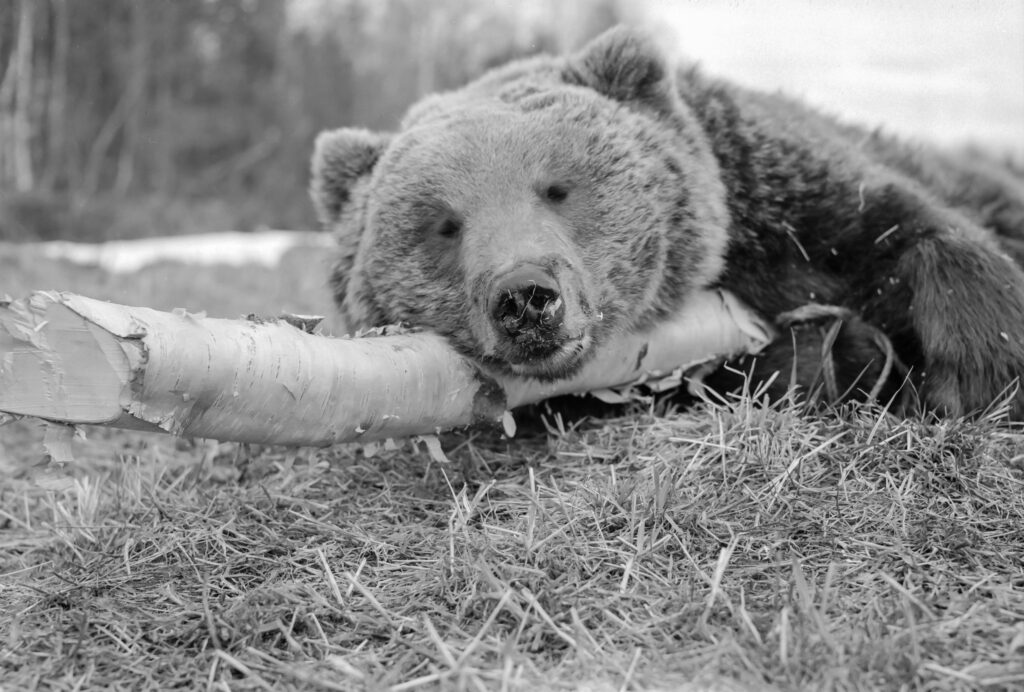The most significant position in the Sámi religion has been the bear. In fact, the so-called bear cult belongs to the traditions of many other North Eurasian peoples. People have been fascinated by the bear’s lifestyle, especially its winter hibernation. Since the bear only rarely moved beyond the coniferous forest border, usually when following the reindeer, it has been thought of as a creature of the forest.
Bears are divided into three categories: regular bears, “roused” bears, and bears that were shape-shifting humans. Regular bears were not inherently evil and avoided humans. A bear that attacked people and domestic animals was considered to have been roused by a witch or a noaidi: it was magically forced to attack, and a human was always considered to be the culprit. In Kuusamo, this has also been called “tenhottaminen”. A roused bear has been found at least in Teeriranta, where it was forced to eat the horses of a farm.
Sámi myth and ritual information about the bear is scarce and sparse. From the findings of bear graves, it can be observed that bears are usually buried with the same rite as humans. The most important thing has been to preserve the animal’s bones, which were tried to be buried in their anatomically correct places. According to the belief, the gods were then able to grow meat around the bones and the animal came back to life. The same thing happened to a person in the afterlife, where after they died, they got a new life. Bears’ bones could also be placed on tree branches.
Read a story about the bear’s prophecy:
The bear’s prophecy
